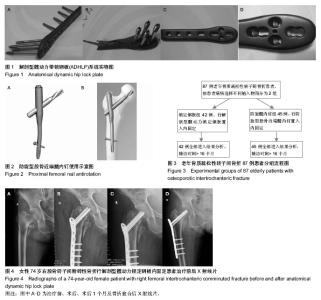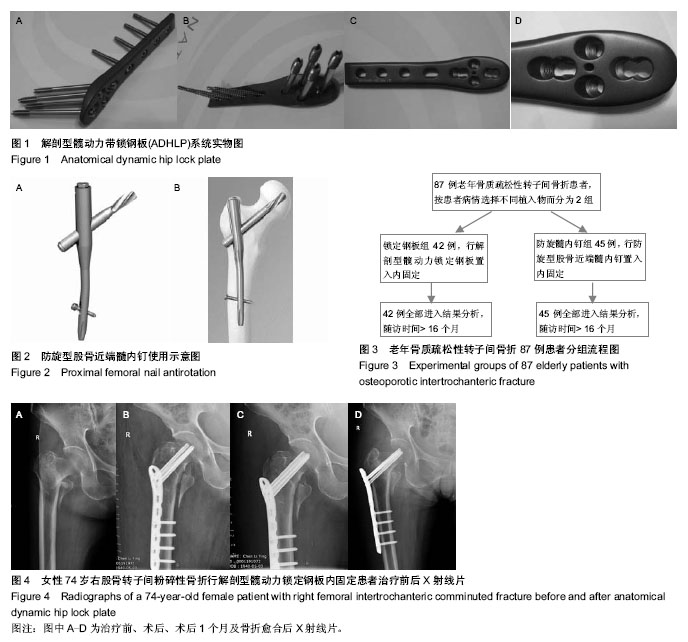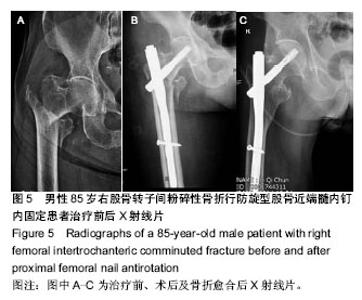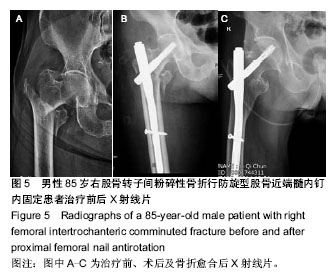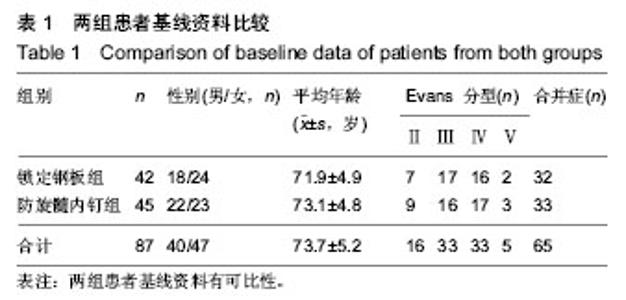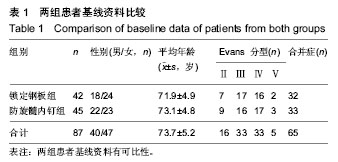| [1] Mereddy P, Kamath S, Ramakrishnan M,et al.The AO/ASIF proximal femoral nail antirotation (PFNA): a new design for the treatment of unstable proximal femoral fractures.Injury. 2009; 40(4):428-432.
[2] Kim SY, Kim YG, Hwang JK.Cementless calcar-replacement hemiarthroplasty compared with intramedullary fixation of unstable intertrochanteric fractures. A prospective, randomized study.J Bone Joint Surg Am. 2005;87(10): 2186-2192.
[3] 赵海生,杨兴,孙俊英.股骨近端髓内钉-螺旋刀片置入治疗股骨转子间骨折32例[J].中国组织工程研究与临床康复,2009,13(35): 6959-6963.
[4] 郑斌,王文晔,谢孝枫,等.防旋股骨近端髓内钉治疗股骨粗隆间骨折98例体会[J].泰山医学院学报,2012,33(7): 518-520.
[5] 林辉,张岩.防旋型股骨近端髓内钉治疗老年性股骨粗隆间骨折[J].中国矫形外科杂志,2012,20(20):1913-1914.
[6] 熊鹰,王大兴,柳百炼,等.解剖型髋动力带锁钢板的研制及临床应用[J].中国矫形外科杂志,2008,16(6):419-422.
[7] 黄异飞,潘静,熊鹰. 解剖型髋动力带锁钢板治疗股骨转子间骨折的疗效评价[J].中华创伤杂志,2009,25(1):61-65.
[8] 曹正品,黄俊涛,苏仕奎,等.髋动力锁定钢板治疗不稳定型股骨转子间骨折[J].临床骨科杂志,2010,13(1):47-48.
[9] Kaplan K, Miyamoto R, Levine BR, et al.Surgical management of hip fractures: an evidence-based review of the literature. II: intertrochanteric fractures.J Am Acad Orthop Surg. 2008;16(11): 665-673.
[10] 黄小英,孔来法.髋动力锁定钢板治疗老年股骨转子间骨折29例[J].浙江创伤外科,2011,19(5): 614-615.
[11] 杨明.髋动力锁定钢板治疗22例股骨转子间骨折体会[J].江西医药,2012,47(10):874-875.
[12] 黄诚,付聪聪,黄相杰.DHS和PFNA治疗老年骨质疏松性转子间骨折的临床疗效对比[J].中国矫形外科杂志,2014, 22(6): 568-570.
[13] 茹江英,丛宇,仓海斌,等.老年股骨粗隆间骨折PFNA内固定术后失效的翻修方法及效果分析[J].中国骨与关节损伤杂志,2014, 29(2): 129-131. |
